See also
- Creatures (inspired by The Planiverse)
- Flatland
- Flatterland
- Spaceland
- Sphereland
| Author | A. K. Dewdney |
|---|---|
| Language | English |
| Genre | Science fiction |
Publication date | 1984 |
| ISBN | 0-387-98916-1 |
The Planiverse is a novel by A. K. Dewdney, written in 1984 about a two-dimensional world.
In the spirit of Edwin Abbott Abbott's Flatland , Dewdney and his computer science students simulate a two-dimensional world with a complex ecosystem. To their surprise, they find their artificial 2D universe has somehow accidentally become a means of communication with an actual 2D world: Arde. They make a sort of "telepathic" contact with "YNDRD", referred to by the students as Yendred, a highly philosophical Ardean, as he begins a journey across the western half, Punizla, of the single continent Ajem Kollosh to learn more about the spiritual beliefs of the people of the East, Vanizla. Yendred mistakes Dewdney's class for "spirits" and takes great interest in communicating with them. The students and narrator communicate with Yendred by typing on the keyboard; Yendred's answers appear on the computer's printout. The name Yendred (or "Yendwed", as pronounced by one of the students, who has a speech impediment) is simply "Dewdney" reversed.
Written as a travelogue, Yendred's journey through the West takes him through several cities. He visits the Punizlan Institute for Technology and Science, where Arde's technology is explored in great detail. For example, all houses are underground, so as not to be demolished by the periodic 2D rivers; nails are useless for attaching two objects, so tape and glue are used instead; most Ardean creatures cannot have deuterostomic digestive tracts since they would split into two; even games such as Go have one-dimensional Alak analogues. An appendix explains various other aspects of two-dimensional science and technology which could not fit into the main story.
The underlying allegory culminates in Yendred's arrival at the watershed of the continent and the planet's only building above ground, where he at last finds Drabk, an Ardean who professes "knowledge of the Beyond", and teaches Yendred to fly. Yendred finds that to keep contact with Earth is no longer of benefit, and contact with Arde is lost.
In 1977, Dewdney was inspired by an allegory of a two-dimensional universe, and decided to expand upon the physics and chemistry of such a universe. He published a short monograph in 1979 called Two-Dimensional Science and Technology. This was reviewed by Martin Gardner in his July 1980 "Mathematical Games" column in Scientific American , and shortly after this, all copies of the monograph were sold out. In 1981, following the success of the monograph, Dewdney published A Symposium on Two-Dimensional Science and Technology, which contained suggestions for how a two-dimensional universe would work from scientists and non-scientists on varied subjects. Dewdney wrote The Planiverse as a frame story in which to display the scientific and technical features from these previous works, as well as an allegory for his search for a reality deeper than that of scientific enquiry, and his subsequent conversion to Sufiism. [1]
Dave Langford reviewed The Planiverse for White Dwarf #55, and stated that "This delightful book will be inspiring 2D game scenarios any second now." [2]
Kirkus Reviews considered it "an ingenious intellectual exercise—amusing, edifying, sometimes tedious" [3] At Tor.com, Jason Shiga found it to be a "tour de force followup" to Flatland, and found the appendix to be the "most impressive section" of the book. [4]

In physics and mathematics, the dimension of a mathematical space is informally defined as the minimum number of coordinates needed to specify any point within it. Thus, a line has a dimension of one (1D) because only one coordinate is needed to specify a point on it – for example, the point at 5 on a number line. A surface, such as the boundary of a cylinder or sphere, has a dimension of two (2D) because two coordinates are needed to specify a point on it – for example, both a latitude and longitude are required to locate a point on the surface of a sphere. A two-dimensional Euclidean space is a two-dimensional space on the plane. The inside of a cube, a cylinder or a sphere is three-dimensional (3D) because three coordinates are needed to locate a point within these spaces.

A cellular automaton is a discrete model of computation studied in automata theory. Cellular automata are also called cellular spaces, tessellation automata, homogeneous structures, cellular structures, tessellation structures, and iterative arrays. Cellular automata have found application in various areas, including physics, theoretical biology and microstructure modeling.
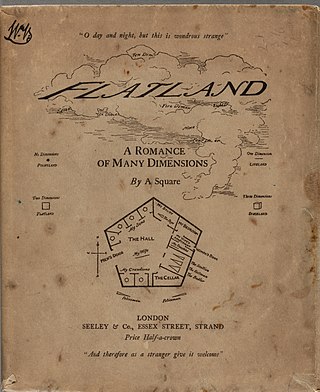
Flatland: A Romance of Many Dimensions is a satirical novella by the English schoolmaster Edwin Abbott Abbott, first published in 1884 by Seeley & Co. of London. Written pseudonymously by "A Square", the book used the fictional two-dimensional world of Flatland to comment on the hierarchy of Victorian culture, but the novella's more enduring contribution is its examination of dimensions.
Alexander Keewatin Dewdney was a Canadian mathematician, computer scientist, author, filmmaker, and conspiracy theorist. Dewdney was the son of Canadian artist and author Selwyn Dewdney and art therapist Irene Dewdney, and brother of poet Christopher Dewdney.

Ian Nicholas Stewart is a British mathematician and a popular-science and science-fiction writer. He is Emeritus Professor of Mathematics at the University of Warwick, England.
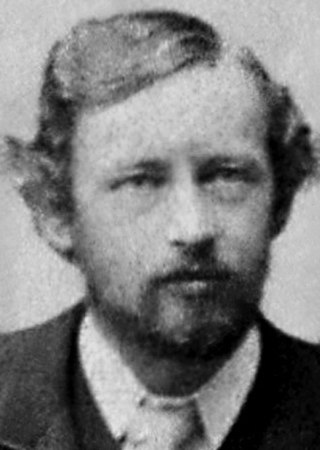
Charles Howard Hinton was a British mathematician and writer of science fiction works titled Scientific Romances. He was interested in higher dimensions, particularly the fourth dimension. He is known for coining the word "tesseract" and for his work on methods of visualising the geometry of higher dimensions.

Scientific visualization is an interdisciplinary branch of science concerned with the visualization of scientific phenomena. It is also considered a subset of computer graphics, a branch of computer science. The purpose of scientific visualization is to graphically illustrate scientific data to enable scientists to understand, illustrate, and glean insight from their data. Research into how people read and misread various types of visualizations is helping to determine what types and features of visualizations are most understandable and effective in conveying information.

"The Nine Billion Names of God" is a 1953 science fiction short story by British writer Arthur C. Clarke. The story was among the stories selected in 1970 by the Science Fiction Writers of America as one of the best science fiction short stories published before the creation of the Nebula Awards. It was reprinted in The Science Fiction Hall of Fame, Volume One, 1929–1964.

Four-dimensional space (4D) is the mathematical extension of the concept of three-dimensional space (3D). Three-dimensional space is the simplest possible abstraction of the observation that one needs only three numbers, called dimensions, to describe the sizes or locations of objects in the everyday world. For example, the volume of a rectangular box is found by measuring and multiplying its length, width, and height. This concept of ordinary space is called Euclidean space because it corresponds to Euclid's geometry, which was originally abstracted from the spatial experiences of everyday life.
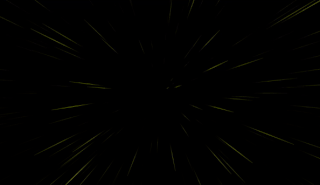
In science fiction, hyperspace is a concept relating to higher dimensions as well as parallel universes and a faster-than-light (FTL) method of interstellar travel. Its use in science fiction originated in the magazine Amazing Stories Quarterly in 1931 and within several decades it became one of the most popular tropes of science fiction, popularized by its use in the works of authors such as Isaac Asimov and E. C. Tubb, and media franchises such as Star Wars.

Sphereland: A Fantasy About Curved Spaces and an Expanding Universe is a 1965 translation of Bolland : een roman van gekromde ruimten en uitdijend heelal, a 1957 novel by Dionys Burger, and is a sequel to Flatland, a novel by "A Square". The novel expands upon the social and mathematical foundations on which Flatland is based. It is markedly different from the first novel in that it has a more prosaic ending and treatment of society.
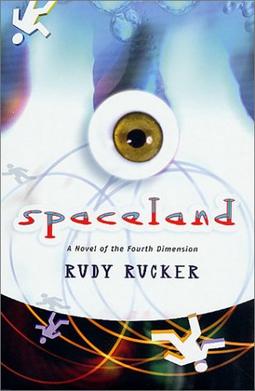
Spaceland is a science fiction novel by American mathematician and computer scientist Rudy Rucker, and published in 2002 by Tor Books.

The Fourth Dimension: Toward a Geometry of Higher Reality (1984) is a popular mathematics book by Rudy Rucker, a Silicon Valley professor of mathematics and computer science. It provides a popular presentation of set theory and four dimensional geometry as well as some mystical implications. A foreword is provided by Martin Gardner and the 200+ illustrations are by David Povilaitis.
The Mechanical Universe...And Beyond is a 52-part telecourse, filmed at the California Institute of Technology, that introduces university level physics, covering topics from Copernicus to quantum mechanics. The 1985-86 series was produced by Caltech and INTELECOM, a nonprofit consortium of California community colleges now known as Intelecom Learning, with financial support from Annenberg/CPB. The series, which aired on PBS affiliate stations before being distributed on LaserDisc and eventually YouTube, is known for its use of computer animation.
Joseph Frederick Traub was an American computer scientist. He was the Edwin Howard Armstrong Professor of Computer Science at Columbia University and External Professor at the Santa Fe Institute. He held positions at Bell Laboratories, University of Washington, Carnegie Mellon, and Columbia, as well as sabbatical positions at Stanford, Berkeley, Princeton, California Institute of Technology, and Technical University, Munich.

Computer graphics deals with generating images and art with the aid of computers. Today, computer graphics is a core technology in digital photography, film, video games, digital art, cell phone and computer displays, and many specialized applications. A great deal of specialized hardware and software has been developed, with the displays of most devices being driven by computer graphics hardware. It is a vast and recently developed area of computer science. The phrase was coined in 1960 by computer graphics researchers Verne Hudson and William Fetter of Boeing. It is often abbreviated as CG, or typically in the context of film as computer generated imagery (CGI). The non-artistic aspects of computer graphics are the subject of computer science research.

The Beauty of Fractals is a 1986 book by Heinz-Otto Peitgen and Peter Richter which publicises the fields of complex dynamics, chaos theory and the concept of fractals. It is lavishly illustrated and as a mathematics book became an unusual success.
The idea of a fourth dimension has been a factor in the evolution of modern art, but use of concepts relating to higher dimensions has been little discussed by academics in the literary world. From the late 19th century onwards, many writers began to make use of possibilities opened up by the exploration of such concepts as hypercube geometry. While many writers took the fourth dimension to be one of time, others preferred to think of it in spatial terms, and some associated the new mathematics with wider changes in modern culture.
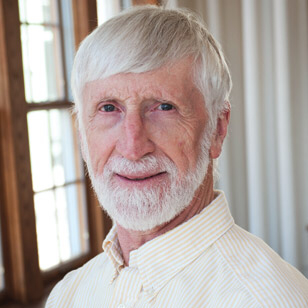
Andrew J. Hanson is an American theoretical physicist and computer scientist. Hanson is best known in theoretical physics as the co-discoverer of the Eguchi–Hanson metric, the first Gravitational instanton. This Einstein metric is asymptotically locally Euclidean and self-dual, closely parallel to the Yang-Mills instanton. He is also known as the co-author of Constrained Hamiltonian Systems and of Gravitation, Gauge Theories, and Differential Geometry, which attempted to bridge the gap between theoretical physicists and mathematicians at a time when concepts relevant to the two disciplines were rapidly unifying. His subsequent work in computer science focused on computer graphics and visualization of exotic mathematical objects, including widely used images of the Calabi-Yau quintic cross-sections used to represent the hidden dimensions of 10-dimensional string theory. He is the author of Visualizing Quaternions.

The Annals of the Heechee is a science fiction novel by the American writer Frederik Pohl, published in 1987 by Ballantine Books. It is about a dead space explorer's machine-stored version who is trying to discover why the Assassins, a mysterious type of pure energy beings, are threatening the stability of the universe. It is part of Pohl's Heechee Saga, which is about the Heechee, a fictional alien race created by Pohl. The Heechee developed advanced technologies, including interstellar space travel, but then disappeared.